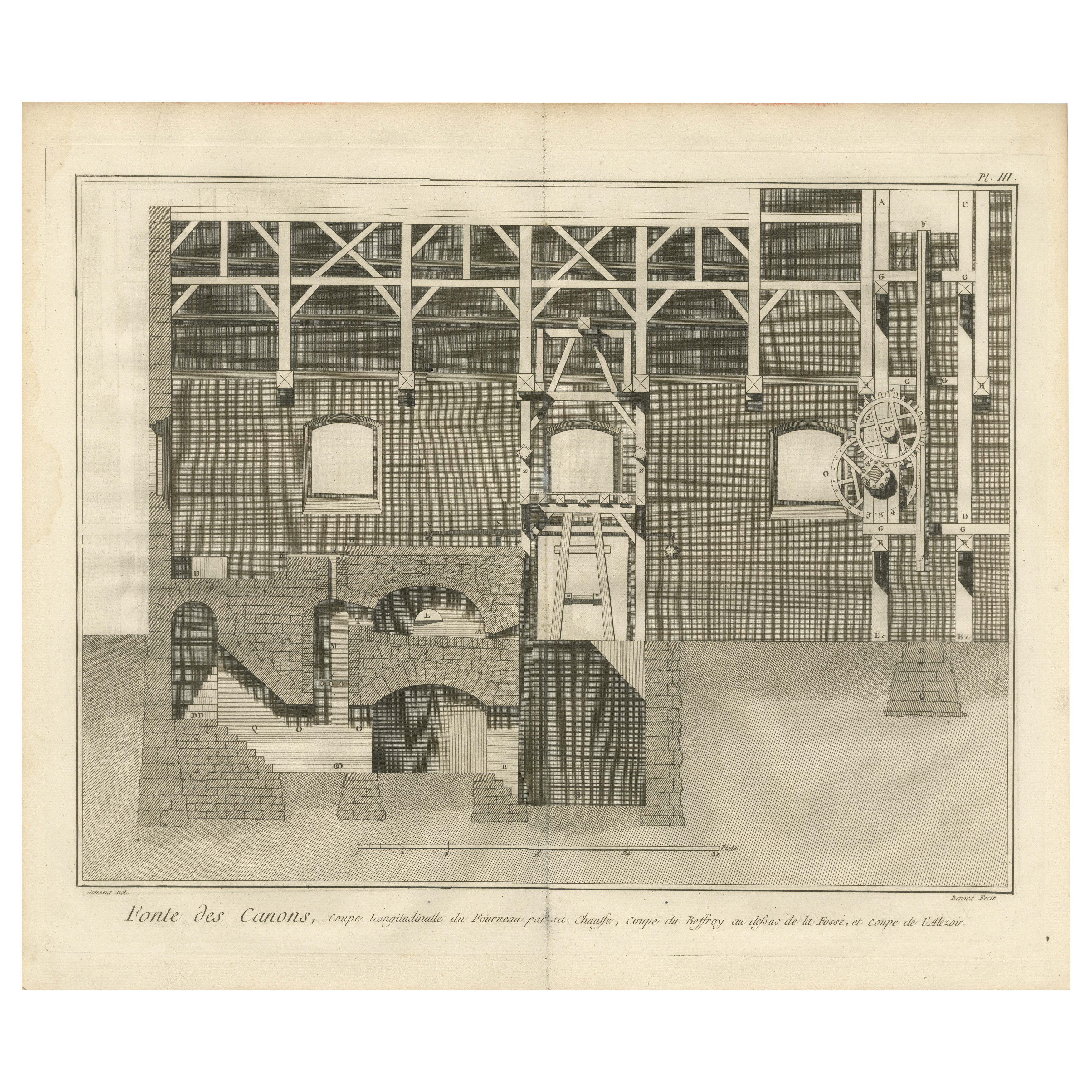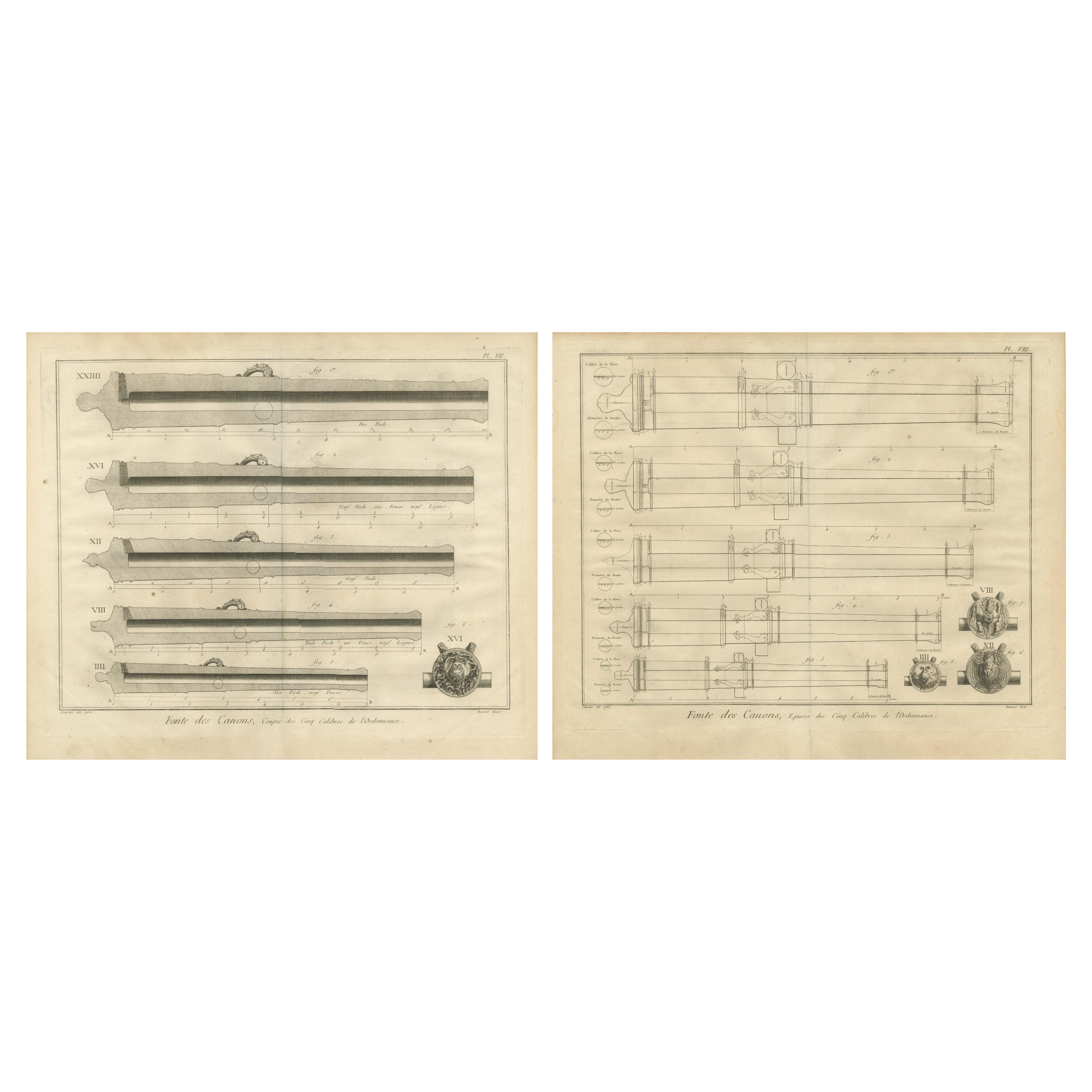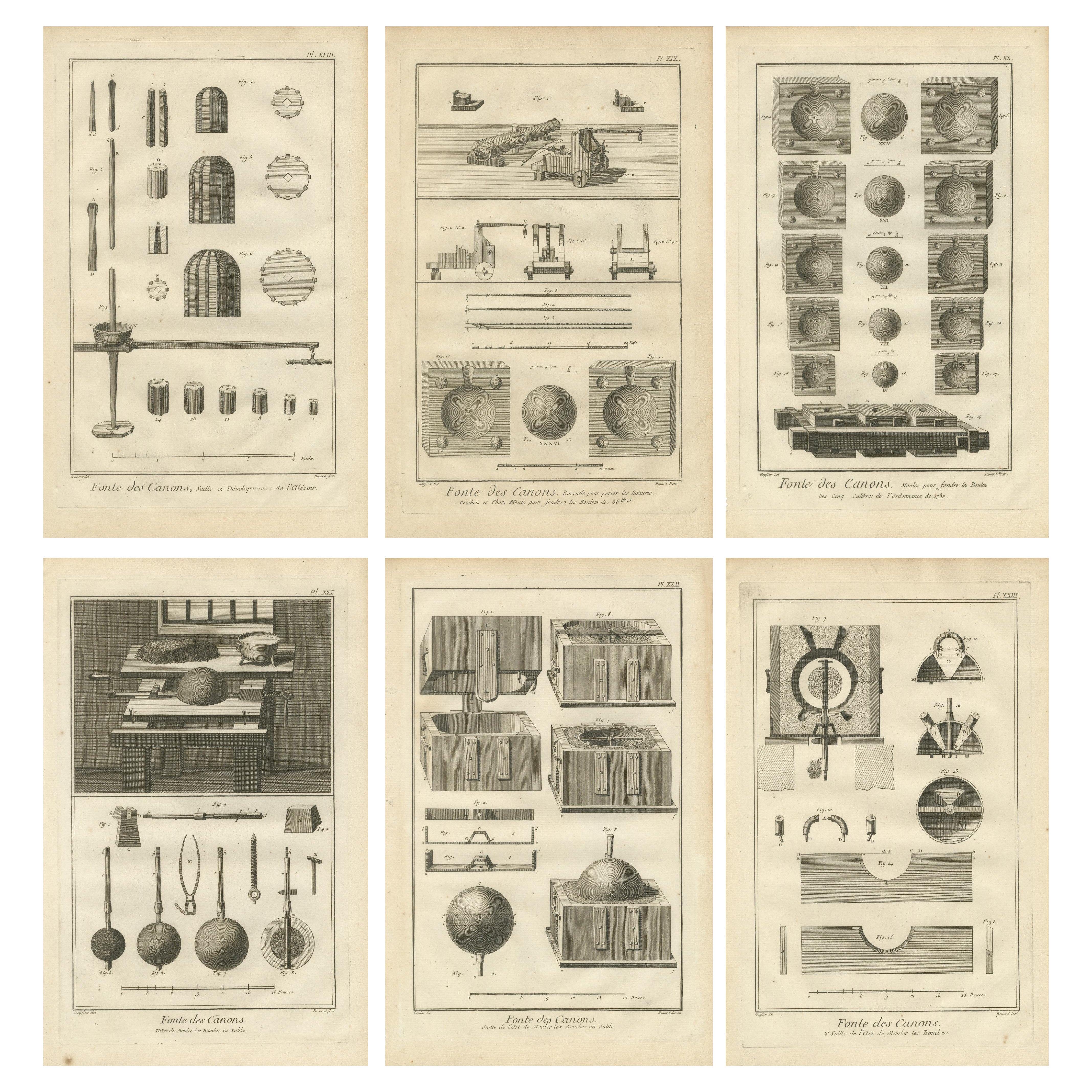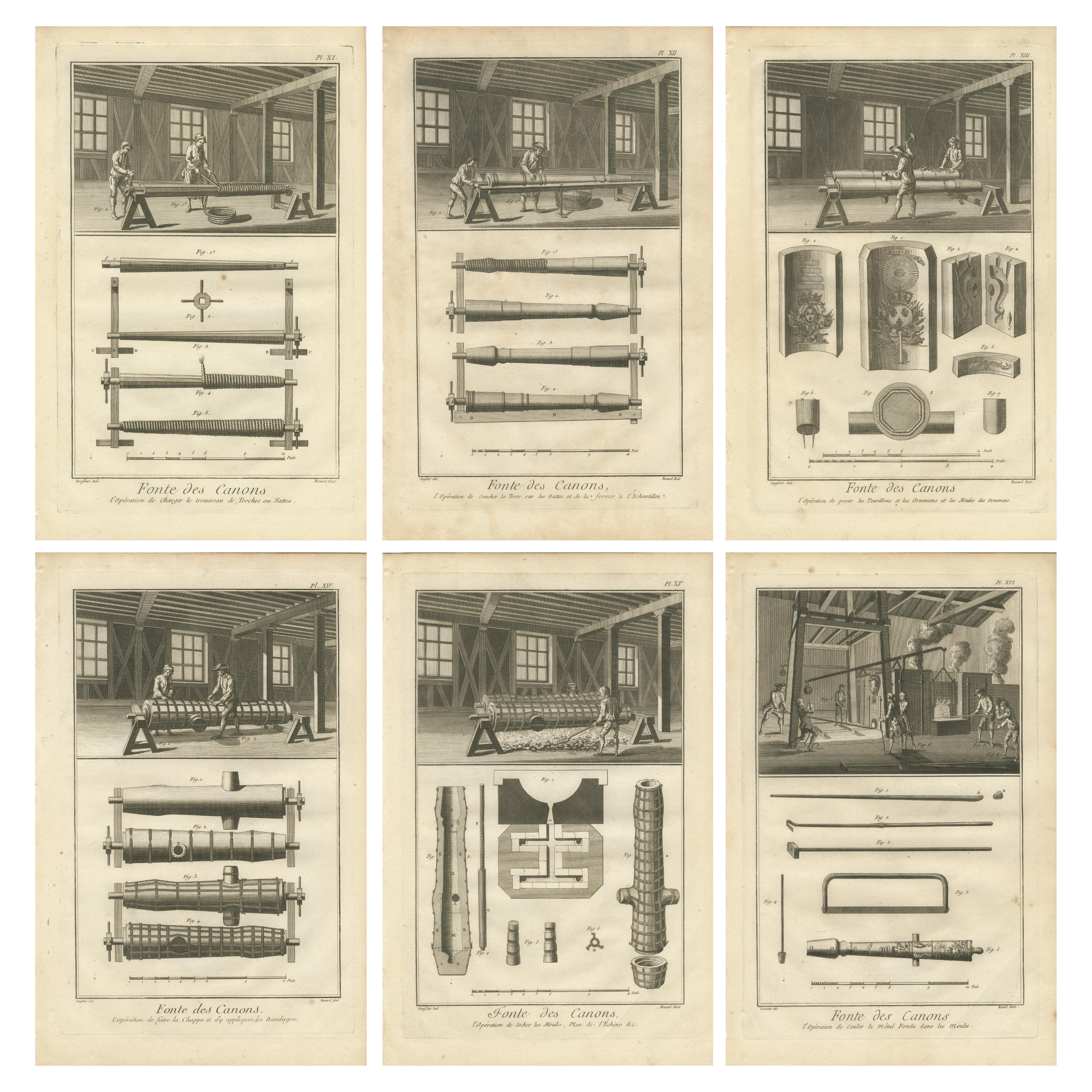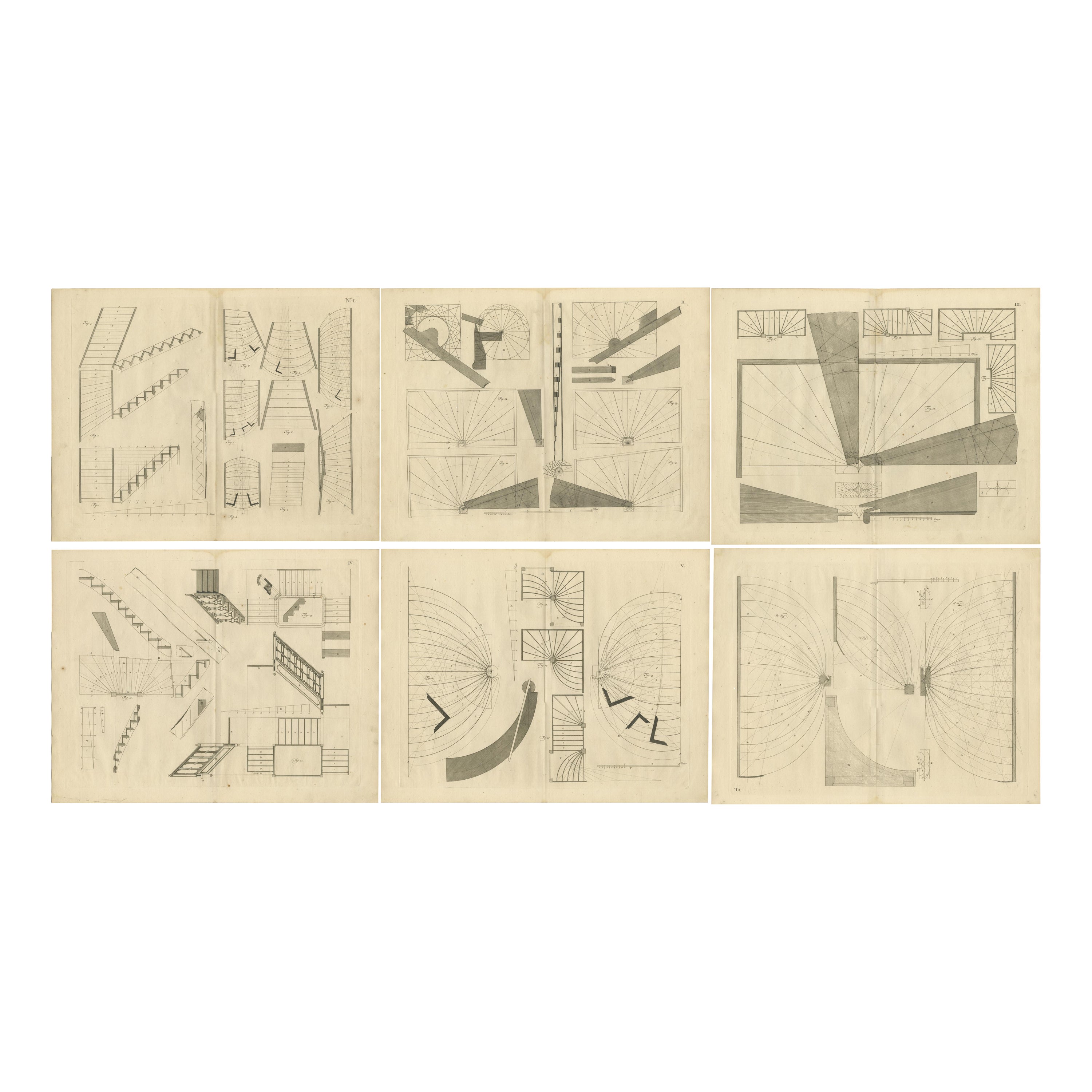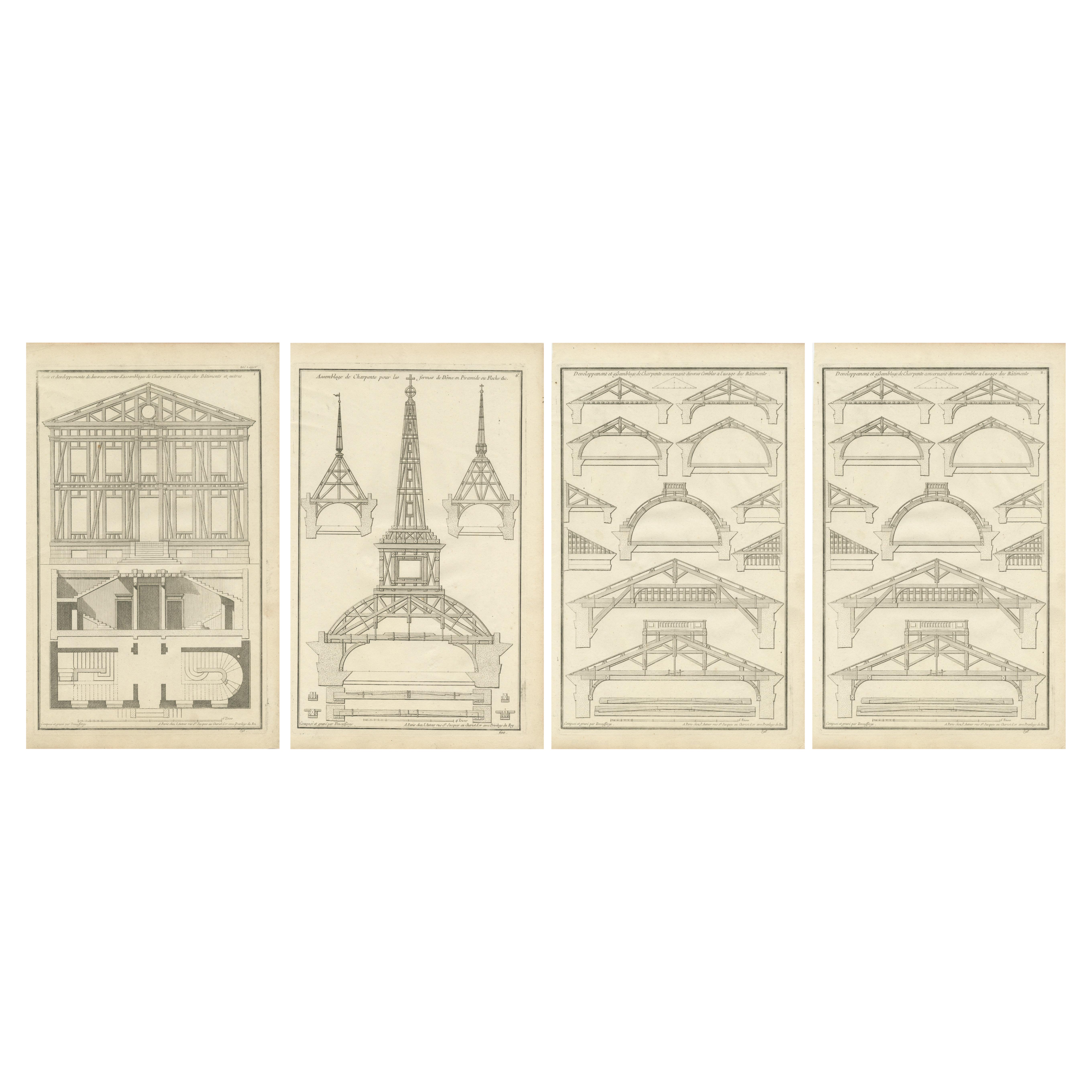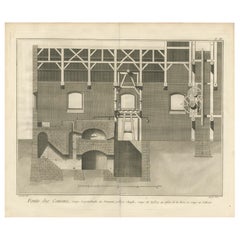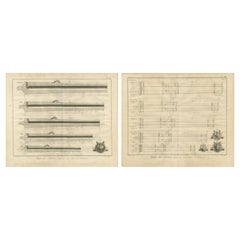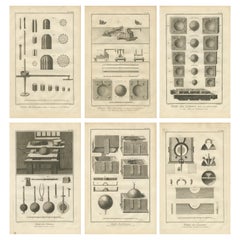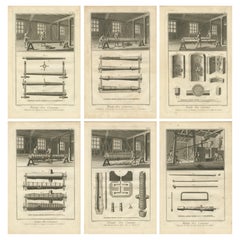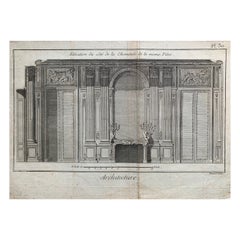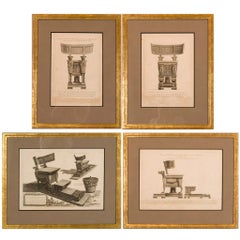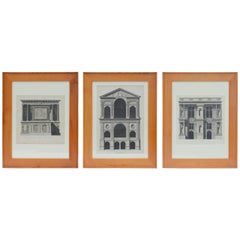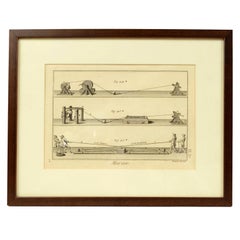Items Similar to Set of 1770s Cannon Foundry Engravings from Diderot’s Encyclopédie, France
Want more images or videos?
Request additional images or videos from the seller
1 of 10
Set of 1770s Cannon Foundry Engravings from Diderot’s Encyclopédie, France
$277.44per set
$346.79per set20% Off
£206.50per set
£258.12per set20% Off
€232per set
€290per set20% Off
CA$386.06per set
CA$482.58per set20% Off
A$421.10per set
A$526.37per set20% Off
CHF 221.21per set
CHF 276.52per set20% Off
MX$5,094.39per set
MX$6,367.99per set20% Off
NOK 2,767.44per set
NOK 3,459.30per set20% Off
SEK 2,613.01per set
SEK 3,266.26per set20% Off
DKK 1,766.35per set
DKK 2,207.94per set20% Off
About the Item
Title: Set of 1770s Cannon Foundry Engravings from Diderot’s Encyclopédie, France
Description: This set of eighteenth-century engravings, titled Fonte des Canons, originates from Denis Diderot’s Encyclopédie, ou Dictionnaire raisonné des sciences, des arts et des métiers, an influential work that documented industrial, scientific, and artistic knowledge of the Enlightenment. Published between 1751 and 1772, the Encyclopédie sought to consolidate and disseminate the technical expertise of craftsmen, engineers, and scientists of the period. These engravings illustrate the highly sophisticated process of casting cannons, a crucial aspect of warfare and naval supremacy during the eighteenth century.
The plates provide intricate technical details of a cannon foundry, showcasing the layout, mechanisms, and architectural elements required for smelting and molding artillery. Each engraving captures an essential aspect of cannon production, ranging from the foundational structure of the furnace to the vertical and cross-sectional schematics of the entire operation.
The engravings highlight the methodical process of cannon casting, an area of military and industrial importance during the eighteenth century. The furnaces depicted were used to melt metals at extremely high temperatures, which were then cast into molds to form artillery pieces. The drawings emphasize the engineering ingenuity of the time, with attention given to ventilation, structural integrity, and molten metal flow.
Each plate contains a variety of technical components, including:
- Ground plans detailing the foundational layout of the foundry, showing the structure and brickwork of the furnace
- Cross-sectional views of the heating chamber and the ventilation system used to maintain the proper temperature for metal casting
- Elevations of the foundry, featuring bellows, pulley systems, and the intricate furnace mechanics used in cannon production
- Structural details of the foundry, including stairways, fire pits, and reinforced vaults that contributed to the stability of the operation
The detailed line work in these engravings demonstrates the precision of eighteenth-century printmaking. The engravings were likely produced under the direction of Diderot and his contributors, including artists and engravers who specialized in industrial and mechanical subjects. These plates provide an invaluable visual record of the scientific advancements that shaped the development of metallurgy and artillery in early modern Europe.
Condition Report: The engravings are well preserved, with fine paper texture typical of high-quality eighteenth-century prints. The black ink remains crisp, preserving the clarity of the architectural details and mechanical components.
There is light age-toning along the edges, a natural occurrence in prints of this age. Minor foxing is present but does not detract from the overall legibility and quality of the engravings. The margins remain intact, with no significant tears, stains, or repairs.
Framing Recommendations
To properly preserve and showcase these antique engravings, archival-quality materials are recommended.
For matting and backing, use acid-free, museum-grade board to prevent further aging. A double mat with a neutral outer mat and a soft gray or deep brown inner accent will enhance the rich black tones of the engraving while highlighting the fine line work.
A classic black, dark walnut, or antique-style wooden frame will complement the historical nature of the prints. A multi-panel display with matching frames could be an excellent way to exhibit the full set, emphasizing their technical and artistic value.
To protect the engravings, UV-resistant museum glass or acrylic is recommended to prevent fading while maintaining clarity. Anti-reflective glass will ensure that the fine details remain fully visible without glare.
For mounting, avoid adhesives that may damage the paper. Instead, use archival-quality corner mounts or Japanese paper hinges to secure the engravings safely without causing harm.
These engravings should be displayed in a stable environment, away from direct sunlight, humidity, and temperature fluctuations. They would be ideally suited for libraries, engineering collections, military museums, or private collections focused on eighteenth-century industrial history.
This rare set of cannon foundry engravings from Diderot’s Encyclopédie offers a fascinating glimpse into the scientific and industrial advancements of the Enlightenment. It is a valuable addition to collections dedicated to antique prints, military history, and early engineering innovations.
- Dimensions:Height: 15.67 in (39.8 cm)Width: 10.24 in (26 cm)Depth: 0.01 in (0.2 mm)
- Sold As:Set of 4
- Materials and Techniques:Paper,Engraved
- Period:1770-1779
- Date of Manufacture:circa 1770
- Condition:Good. Light age-toning along the edges, a natural occurrence in prints of this age. Minor foxing is present but does not detract from the overall quality of the engravings. The margins remain intact, with no significant tears, stains or repairs.
- Seller Location:Langweer, NL
- Reference Number:Seller: BG-13998-1, -2, -4, -51stDibs: LU3054343935202
About the Seller
5.0
Recognized Seller
These prestigious sellers are industry leaders and represent the highest echelon for item quality and design.
Platinum Seller
Premium sellers with a 4.7+ rating and 24-hour response times
Established in 2009
1stDibs seller since 2017
2,655 sales on 1stDibs
Typical response time: <1 hour
- ShippingRetrieving quote...Shipping from: Langweer, Netherlands
- Return Policy
Authenticity Guarantee
In the unlikely event there’s an issue with an item’s authenticity, contact us within 1 year for a full refund. DetailsMoney-Back Guarantee
If your item is not as described, is damaged in transit, or does not arrive, contact us within 7 days for a full refund. Details24-Hour Cancellation
You have a 24-hour grace period in which to reconsider your purchase, with no questions asked.Vetted Professional Sellers
Our world-class sellers must adhere to strict standards for service and quality, maintaining the integrity of our listings.Price-Match Guarantee
If you find that a seller listed the same item for a lower price elsewhere, we’ll match it.Trusted Global Delivery
Our best-in-class carrier network provides specialized shipping options worldwide, including custom delivery.More From This Seller
View All18th Century Cannon Foundry Engraving from Diderot’s Encyclopédie, circa 1770
Located in Langweer, NL
18th Century Cannon Foundry Engraving from Diderot’s Encyclopédie, circa 1770
This fine 18th-century engraving, titled Fonte des Canons, origin...
Category
Antique 1770s Prints
Materials
Paper
Antique 18th Century Engraving of Cannon Designs and Cross-Sections from Diderot
Located in Langweer, NL
Title: Antique 18th Century Engraving of Cannon Designs and Cross-Sections from Diderot
Description: This original 18th-century engraving presents highly detailed technical illustra...
Category
Antique 1770s Prints
Materials
Paper
$277 Sale Price / set
20% Off
Rare Engravings of Cannon Manufacturing and Artillery Casting Techniques, c.1770
Located in Langweer, NL
Title: Rare 18th-Century Engravings of Cannon Manufacturing and Artillery Casting Techniques
Description: This exquisite set of six 18th-century engravings showcases the intricate p...
Category
Antique 1770s Prints
Materials
Paper
Rare Engravings Depicting the Intricate Process of Cannon Manufacturing, ca.1770
Located in Langweer, NL
Rare 18th-century engravings depicting the intricate process of cannon manufacturing
This compilation of six detailed 18th-century engravings showcases the fascinating and comple...
Category
Antique 1770s Prints
Materials
Paper
1739 Masterwork: Van der Horst's Architectural Elegance in Original Engravings
Located in Langweer, NL
These engravings are a series of detailed architectural drawings from "THEATRUM MACHINARUM UNIVERSALE of Nieuwe Algemeene Bouwkunde" by Tieleman van der Horst, engraved by Jan Schenk...
Category
Antique 1730s Prints
Materials
Paper
$803 Sale Price / set
20% Off
Free Shipping
18th Century Architectural Mastery by Neufforge in Engravings, Circa 1770
Located in Langweer, NL
Architectural engravings by Jean-François de Neufforge (1714–1791).
Neufforge was a Flemish engraver, architect, and publisher known for his work "Recueil élémentaire d'architectur...
Category
Antique Late 18th Century Belgian Prints
Materials
Paper
$841 Sale Price / set
20% Off
Free Shipping
You May Also Like
Jacques Renaud Bernard, Set of 5 Engraving of Architecture, 18th Century
Located in Beuzevillette, FR
Beautiful set of 5 engravings by Jacques Renaud Bernard representing the parade hall and the apartments of the Duchess of Orleans at the Royal Palace in Paris, architectural ensemble designed by the architect of Louis XV Pierre Contant D'Ivry. The engravings represent the architectural details of the different rooms (moldings, sculptures, furniture etc.) This set of engravings...
Category
Antique Late 18th Century French Louis XVI Picture Frames
Materials
Paper
Copper Plate Engravings by Giovanni Battista Piranesi
By Giovanni Battista Piranesi
Located in San Francisco, CA
Set of etchings of views of a Greek ceremonial klismos chair.
In his fifties, G.B. Piranesi was interested in archaeology and studied in Southern Ita...
Category
Antique 1770s Italian Neoclassical Drawings
Materials
Wood, Paper
$7,000 Sale Price / set
30% Off
Early 19th Century Architectural Prints by Louis-Pierre Baltard de la Fresque
By Louis-Pierre Baltard
Located in Los Angeles, CA
Three gorgeous early 19th century architectural prints by Louis-Pierre Baltard de la Fresque (1764-1846).
Category
Antique 19th Century French Neoclassical Prints
Materials
Wood, Paper
Engraving Print from the Panckoucke Encyclopédie Nautical Subject, 1782-1832
Located in Milan, IT
Print by engraving on copper plate from the Panckoucke Encyclopédie méthodique, end of the 18th century, volume Marine Planches (more than 1,500 figures dealing with all subjects on the marina: planes, construction, carpentry, tree trunks, armaments of maneuvers, ropes, sails, artillery, ship maneuvers and combat tactics). This is the plate no. n. 26, pag. 70 fig. 350-353; with frame cm 38.3 x 31.5. Ship ropes are depicted. The Print has the "Benard direxit...
Category
Antique 1790s French Nautical Objects
Materials
Paper
Different Profils Des Cimaisses, Roubo French cabinetmaking design engraving
Located in Melbourne, Victoria
'Different Profils Des Cimaisses et Des Plainthes'
French copper-line engraving by Berthault after Andre Jacob Roubo (1739–1791). 18th century laid watermarked paper.
From Roubo's ...
Category
Late 18th Century French School Interior Prints
Materials
Engraving
Set of 6 Original Antique Architectural Prints After L.Carter. C. 1813
Located in St Annes, Lancashire
Wonderful set of 6 architectural prints
Copper-plate engravings after the original antique architectural drawings by L.Carter
Published...
Category
Antique 1810s English Palladian Prints
Materials
Paper
More Ways To Browse
Porcelain Monkeys
Porcelain Panther
Postal Scale
Pottery Bank
Pre Columbian Peru Chimu
Punch And Judy
Quito School
Ray Kaiser
Red Robin Vintage
Repurposed Industrial
Reticulated China
Retro Drawers
Revolving Book Table
Roman Chest
Rosenthal Studio Linie Bjorn Wiinblad
Round Marble Column
Royal Doulton Arts And Crafts
Ruby Red Glass Bowl
